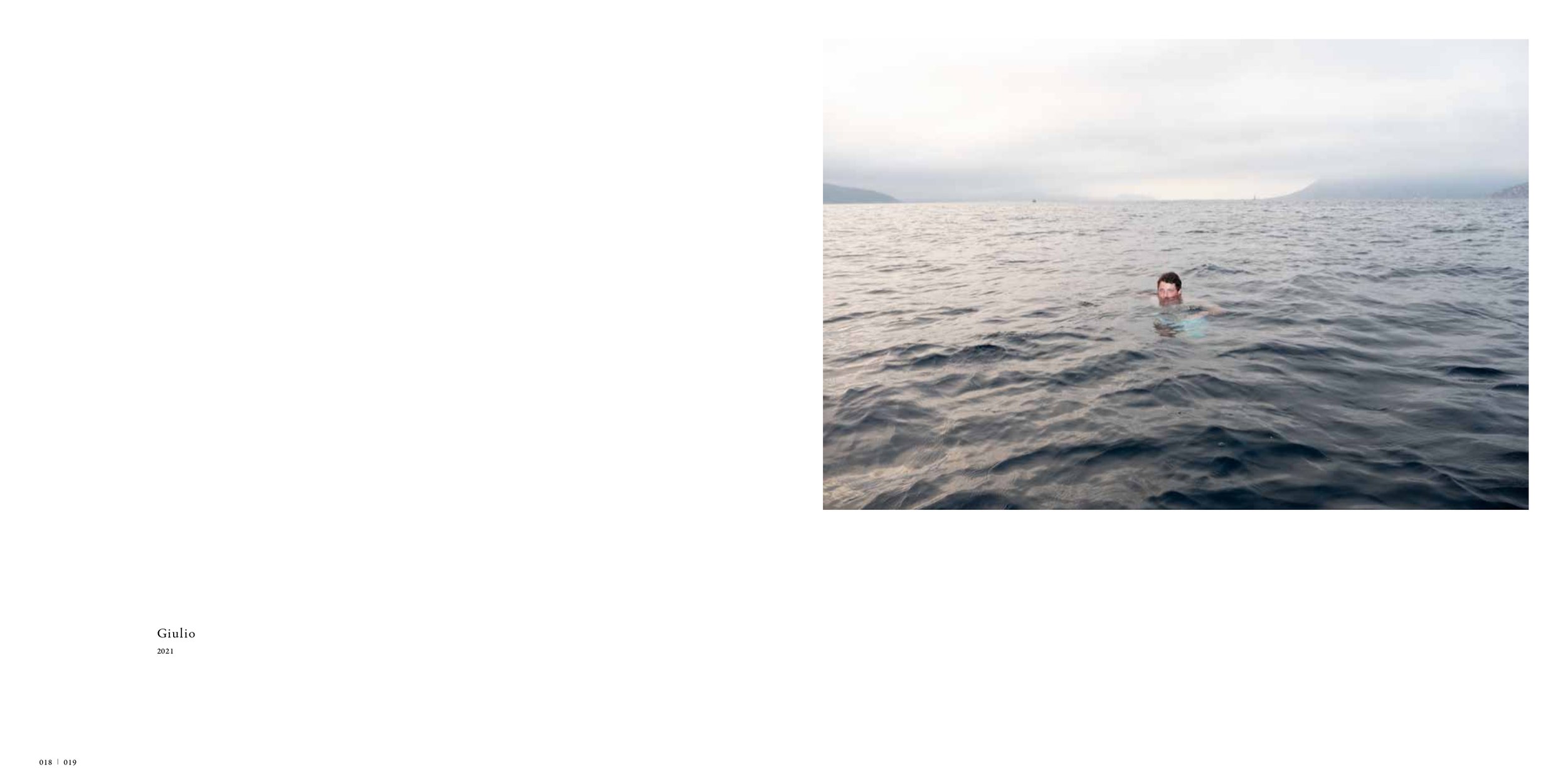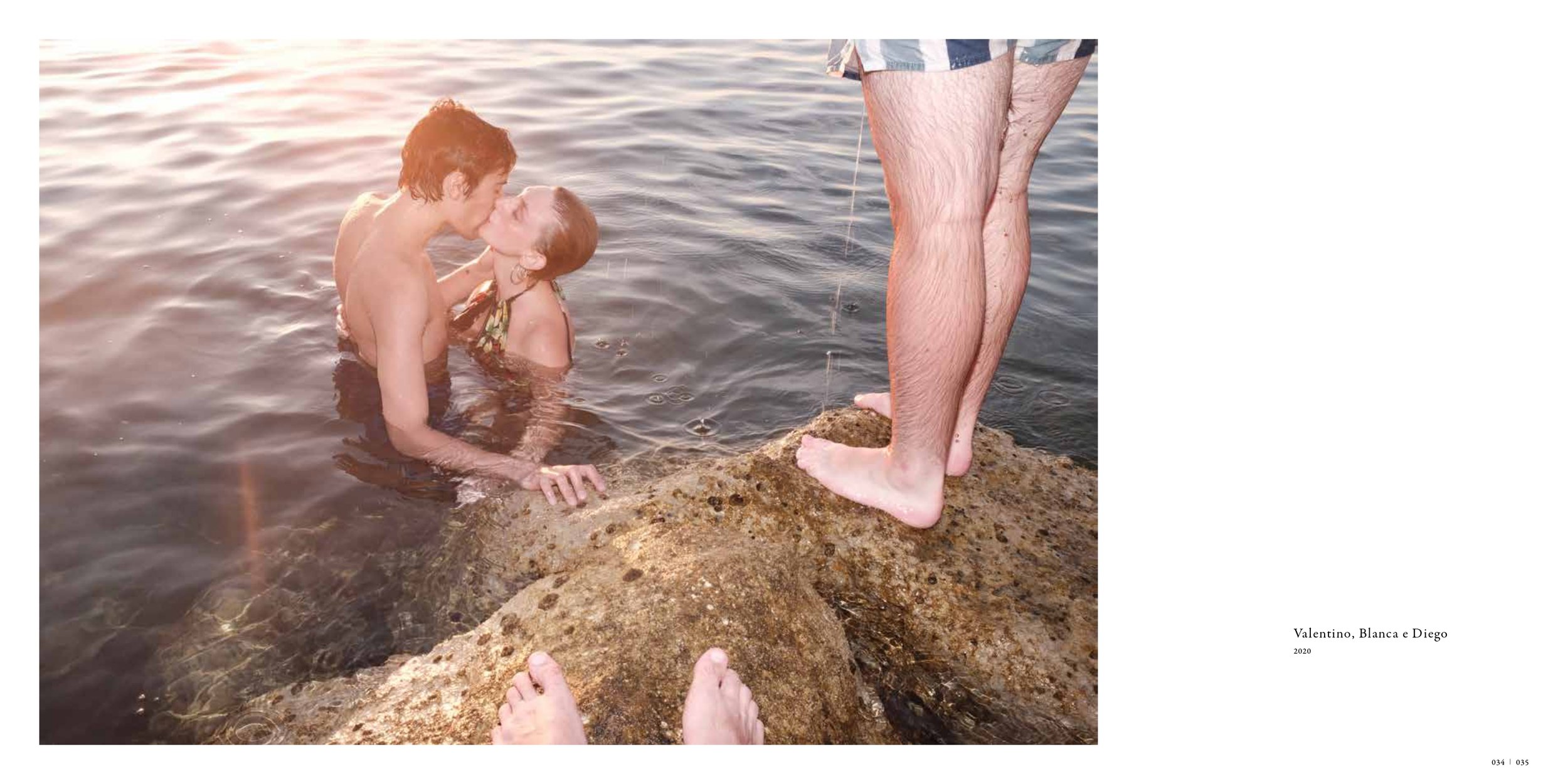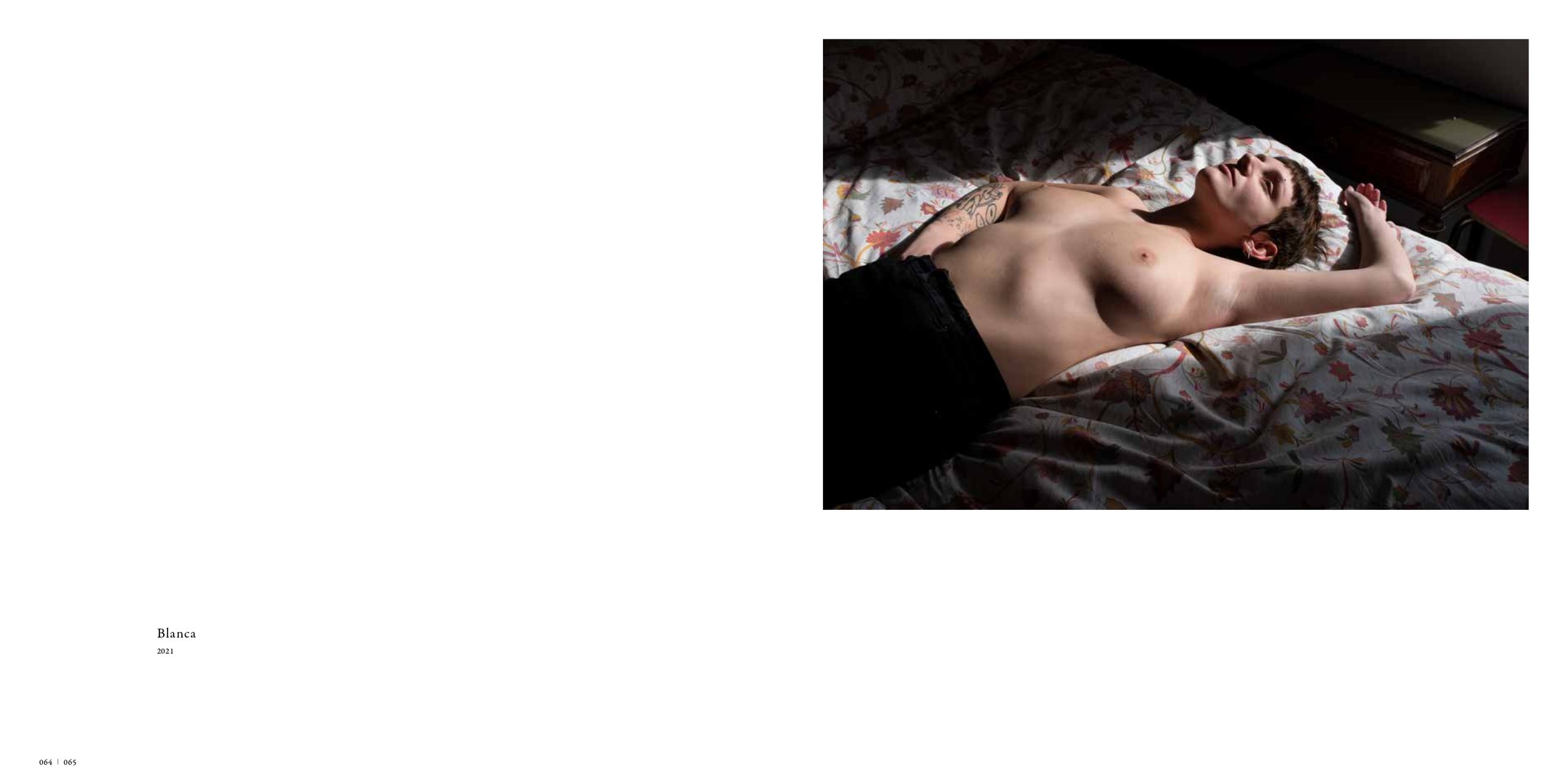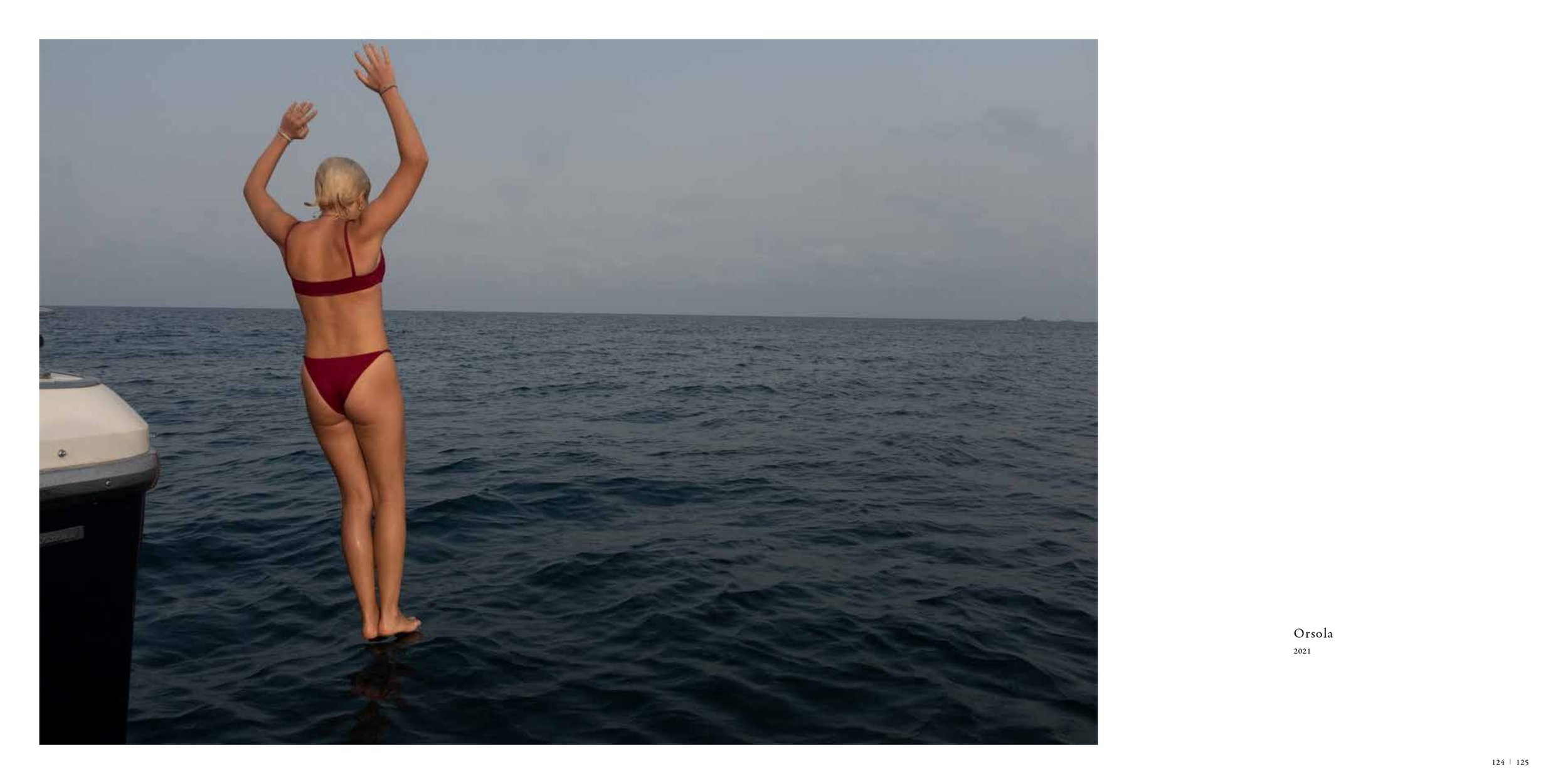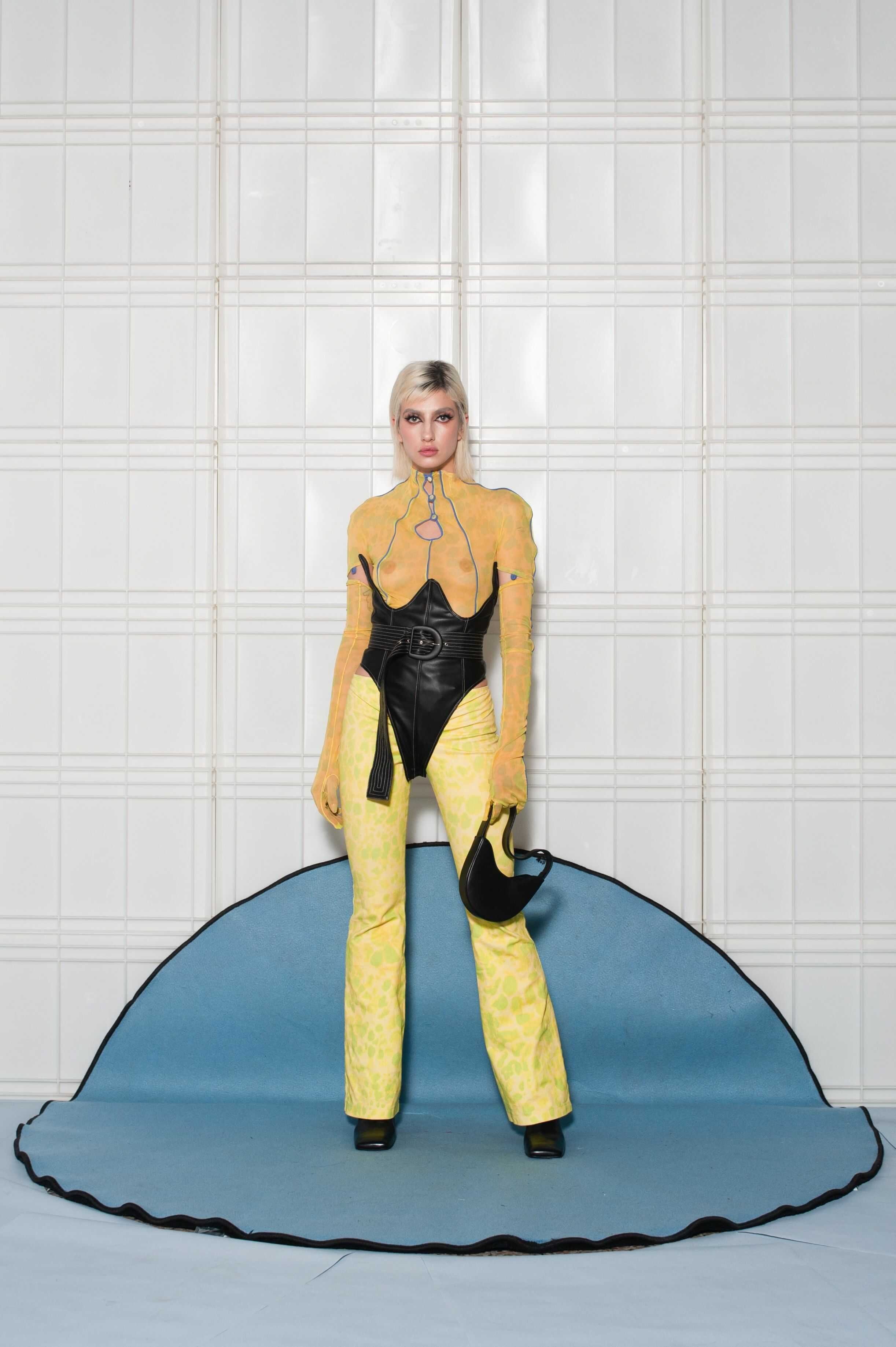Tommaso Montenesi Posch
Spacing from intimate portraits to fashion photography, Tommaso Montenesi Posch is a photographer based in Milan. With his first published book coming out, Posch previews for Coeval “The Urgency of life” — a collection of images on the desires, fears and excitement surrounding those suspended moments that are waiting to be lived.
Each shot is a confidential yet universal tale on dealing with growth in the path towards adulthood; the daily boredom of days that all seem to be the same is interrupted by the presence of familiar faces who suddenly give them value — with their intricate net of relationships, unspoken thoughts and suspended glances — they are all waiting to live, to consume, to burn.
You started taking pictures with an interest in street photography, then you moved on to more familiar subjects and recently to fashion photography. Now you have been published your first book ever, “The Urgency of Life”. Where does this project place into your path and how is it different from previous projects?
Since I’ve been given the opportunity to create this book in collaboration with Silvana Editoriale, I always thought of it as the greatest left turn in my photographic career. A book in my mind has its own entity, its own splendor, it differs from other projects because it stays in the collective memory longer than images on social media. Styles can change, yourself can change but the book will keep the memory of what you were, forever.
A handwritten story opens the book: it is the description of an image that appeared to you like a dream or a vision. From this tale, a request emerges: "we demand our urgency of life" - which gives the book its title. What are you referring to?
It’s something that came up while wandering around like a tramp with my friends and the project was taking shape. The text I wrote has its own universal meaning, the lives that must be lived. On the other hand, another thought stumbled upon me as I stood in front of my subjects: the fact that this project, as much as it speaks of life and close friends, speaks about my naivety too as well. Sometimes I say to myself that I am old enough to understand that I am still young enough to comprehend the secrets of the world and how it is perceived by the eyes that came before me. I hope that with the future all those things will be revealed to me with unmistakable precision.
Friendly and familiar faces - some recurring, others passenger - are the subjects captured in your photographs. There is also some self-portraiture. How does the relationship with the subjects change when the camera is involved? And what happens when you turn the camera towards yourself?
Taking the majority of the pictures on the book wasn’t an easy task, neither for me, nor for the subject involved and sometimes a climate of tension would erupt while shooting. For me was also an experience based on physical endurance, ‘cause in my mind I thought a photo wouldn't look good if I didn't push my body to the limit, I took pictures hunched over the spiky rocks while cutting myself, diving in the freezing water naked and staying there hours, crushed and jammed in a tiny space while being in the weirdest positions possible just to get the right shot. For my friends was the same, I think… I’ve never talked about it with them, but I could feel it was the same. I had the images already in my head and we both knew that some of them would be difficult to accomplish. On the other hand, looking back at them, it really warms my heart to know that there was a personal struggle in both myself and the subject, and that we were both sharing it to create something. I decided to include myself in some parts of the book just because in my opinion was important not to feel that I was spaced apart from them. We are all the features of a single face.
Water is not only the backdrop for a series of moments, it is also a plastic and sometimes emotional element that opens and closes the book. What fascinates you about this element that is so present in the book's narrative?
One of the main themes that was relevant for me to capture was the passage from the teenage years to the early stages of proper adulthood and water is the main medium of this theme. There is a maternal quality to it, like almost being in a womb and everyone are slowly coming out of it.
Each photograph seems to be the sign of a memory. Which moments are linked to the photos in the book? The most unexpected shot?
Some pictures were shot during one of the longest days I’ve ever experienced in my life, it felt like the sun had slowed down, gropingly descending and reaching exhausted the horizon. It felt good to have those hours of constant light. The most unexpected shot must be the one of my friend Giorgia diving in the pitch black sea, I wasn’t expecting that moment to be captured.
It is an extremely personal yet universal narrative. What hopes do you have towards the viewer?
I hope the viewer understands how to tell a story about yourself you must start from the people around you and comprehend how they perceive you. You must read the glittering in their eyes, see their bodies flourish in the horizon’s gold corona and listen their words as they bounce in glory.
A book is a great achievement. What now?
Now? Good question, I’m currently on the process of starting the first exhibition of this work and I’m working on a new project that i hope one day will be another book!
interview FEDERICA NICASTRO
What to read next




